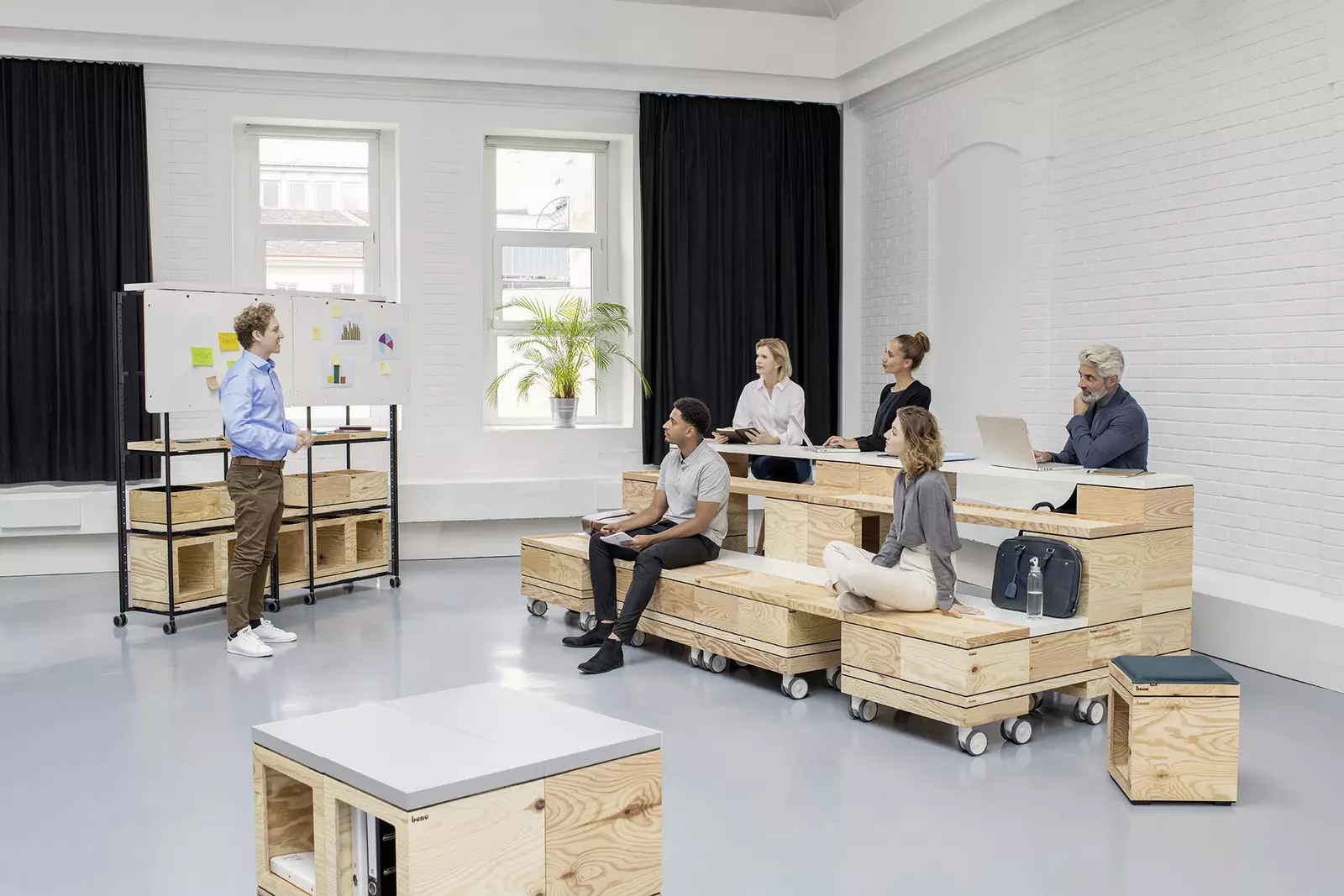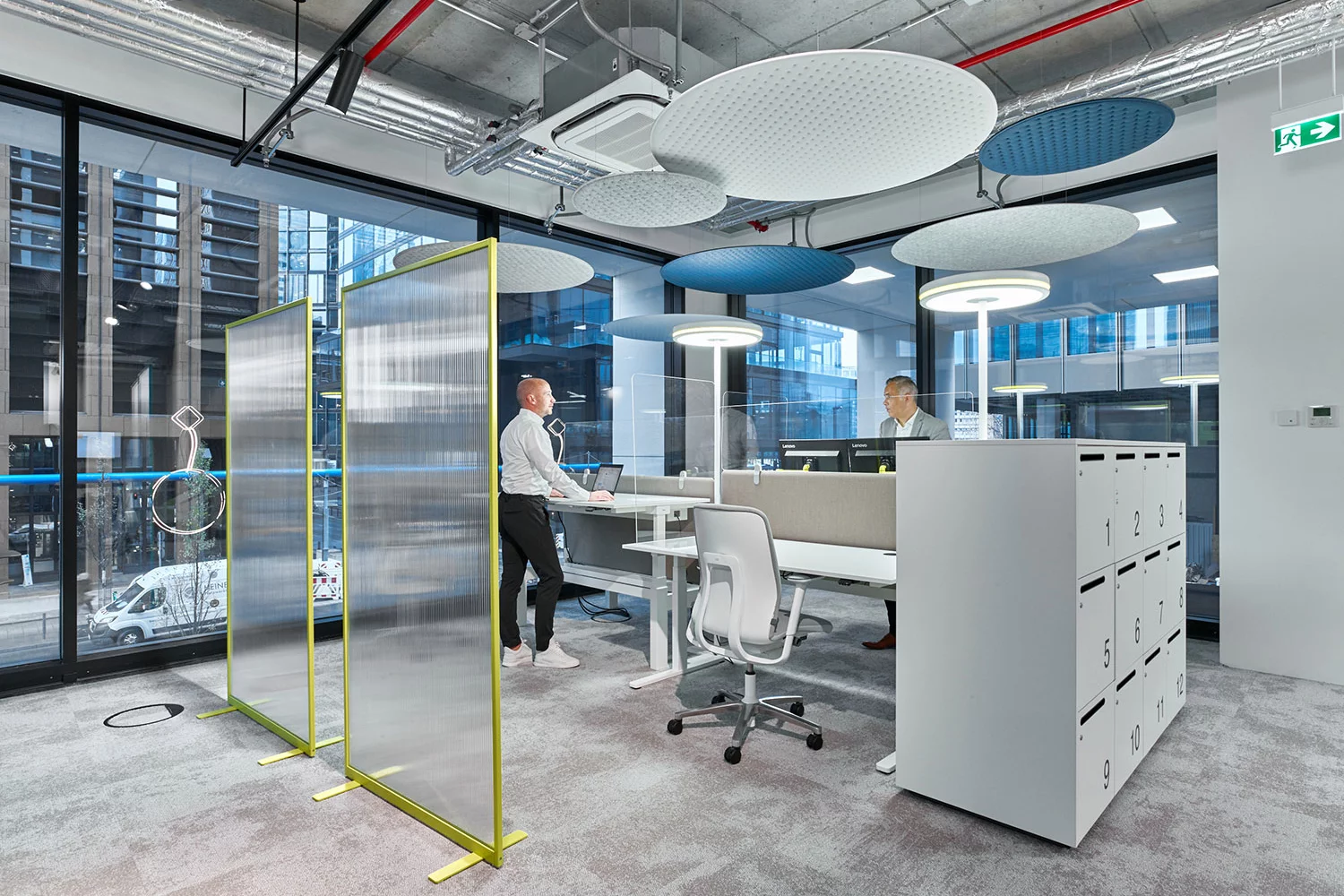Interview with DIDI LENZ about PIXEL
Bene introduced something very innovative into office design with its PIXEL furniture concept. What is special about PIXEL?
To start off, PIXEL isn’t furniture. PIXEL is a flexible module that can serve various functions in space for everyone. A high table for a workshop, a desk for students, a shelving system for a store, a bar for a party. Anything’s possible with inspiration and improvisation. This is exactly what PIXEL is made for – it’s an all-purpose tool at times of constant change.
You developed the innovative PIXEL concept. How did the idea of PIXEL come about?
PIXEL is the product of a journey of ideas through the world of creativity. What do people need in their surroundings to be creative? Which spatial conditions promote creative team activities? PIXEL is the result of a two-year process through several prototypical stages in which we explored the nature of space and the tools inside it.

What are the main industries that use PIXEL?
You might think that PIXEL is made exclusively for the young start-up scene. And PIXEL is, but that’s not all. Quite the opposite. PIXEL works as an ice breaker for rigid structures. This is why PIXEL is also used in established organisations, where people bravely face such tasks as breaking down hierarchies and overcoming department boundaries. These expansive spaces for cross-border ideas – we call them IDEA LABS at Bene – are the perfect platform for PIXEL.
What does it take to generate creativity in a company and actively encourage innovation?
The most important prerequisite for creativity is to allow improvisation and, along with it, the possibility of failure. That’s just the nature of the game. Consciously accepting risks with the prospect of unanticipated success. This takes a good portion of self-confidence along with a real tolerance for mistakes. At a time where the optimisation of results is what counts, this culture has gotten lost. Failure was never just quietly accepted; if anything, it was penalised. Nothing that’s new and ground-breaking can be created from such a culture of fear. This describes the mental conditions of an innovative space.
This mental state can’t be generated with furniture, it’s a question of leadership culture. However, what interior design can achieve is to make inspired use of the available creative leeway. There are a few methods for this that can best be summarised by the term design thinking. A constant cycle of trial and error. For innovation, we need freedom to think and act, methodology and ultimately inspiring spaces.
What will the greatest changes in the working environment be in the next few years?
Many work routines are being supported, if not actually replaced, by robots and artificial intelligence. Human intelligence will make way for BIG DATA, since BIG DATA has more knowledge than any human can ever acquire during a lifetime. In surprising ways, this will affect many knowledge-based professions in particular, since these are mainly founded on individual, personal knowledge and experience. But they can no longer keep up with the data volume of BIG DATA. Legal information, medical findings, insurance contracts are all provided better through artificial intelligence than human experience. Humans must – or should we say ‘may’ – focus on what, as natural beings, has remained their last advantage compared to machines: namely the imagination, which lets us make something new based on sensual perceptions. That’s more or less a euphemism for creativity.


